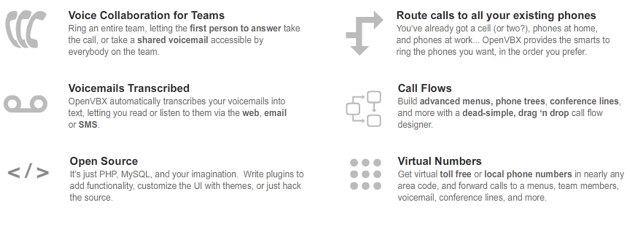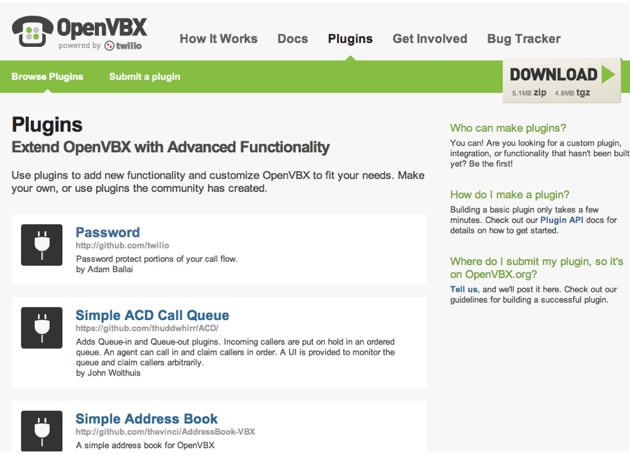 Ever since it launched in late 2008, Twilio has a knack for making cool products. Its core service is a telephony API offering a set of commands that make it easy for developers to integrate phone and SMS services into their web-enabled applications. And today they’re releasing an open source platform based on that technology that has the potential to disrupt business-oriented call routing services in a big way — Twilio is describing it as a sort of Google Voice for businesses, with more flexibility. It’s called OpenVBX.
Ever since it launched in late 2008, Twilio has a knack for making cool products. Its core service is a telephony API offering a set of commands that make it easy for developers to integrate phone and SMS services into their web-enabled applications. And today they’re releasing an open source platform based on that technology that has the potential to disrupt business-oriented call routing services in a big way — Twilio is describing it as a sort of Google Voice for businesses, with more flexibility. It’s called OpenVBX.
So what exactly does it do? OpenVBX lets you set up an advanced telephony service for your business using a drag-and-drop interface. Want a certain phone number to be routed to your entire sales team? Easy — just drag and drop each of their names into the appropriate area. And that’s only the beginning: OpenVBX lets you take advantage of all of Twilio’s integrated services, like text to speech, voice transcription, voicemail forwarding, and SMS messaging. You can have voicemails left at a certain number (say, tech support) automatically forwarded to your entire support staff. If you’re running a restaurant, you can use the service to automatically return a listing of your specials whenever someone sends the word MENU to your number. And all of this is done via drag and drop (see the video below for an example).
Even better: OpenVBX allows for the integration of plugins, allowing you to connect your phone system to other web services. One plugin Twilio CEO Jeff Lawson showed me hooked into 37signals’ Highrise, a web-based contact manager. Using this, you could automatically check to see if the phone number of an incoming call was already in your contact database, and route the call to a certain sales rep accordingly. A second plugin (which was actually created by a third-party developer) hooks into Foursquare, allowing you to change your telephony settings depending on where you’re located. For example, if you checked in at work, it would know to route any incoming calls to your office number rather than your house.
The open-source nature of OpenVBX can be a little confusing. Like WordPress, OpenVBX is a downloadable software package that you upload to your own server and are free to tweak as much as you’d like. However, unlike WordPress, which offers a hosted solution at WordPress.com, Twilio isn’t offering a hosted service yet (though it’s quite obvious that they’re working on launching one in the future). For the time being you’ll have to host it yourself, though Lawson notes that Dreamhost currently has a 1-click install setup, which should make things pretty simple.
Of course, OpenVBX relies heavily on Twilio’s service, tapping into Twilio SMS and telephony APIs. When you use OpenVBX you’re charged Twilio’s normal rates, which run $1 per phone line per month ($2 for a toll-free number) with usage charges of 3 cents per minute (or SMS). Lawson says that it is technically feasible for someone to use OpenVBX with a backend other than Twilio, but that it would take quite a bit of configuration.
Twilio has always been focused on catering to developers, and OpenVBX isn’t any different. While the product will obviously appeal to businesses, Twilio is encouraging developers to take the technology and make it their own by integrating tweaks and plugins. For example, an enterprising developer could tweak OpenVBX so that it’s perfect for restaurants, and then resell it as their own service. Twilio still gets paid through their per-minute and phone line charges, and the developer can charge a hefty premium on top of it.
OpenVBX will be facing a few competitors, including Grasshopper and OneBox, a well established virtual PBX solution that caters to businesses. Lawson acknowledges that there’s quite a bit of feature overlap here, but says that with its plugin system OpenVBX is more extensible than the competition.
Also see Line2, another business-specific Google Voice alternative that we’ve covered before.


